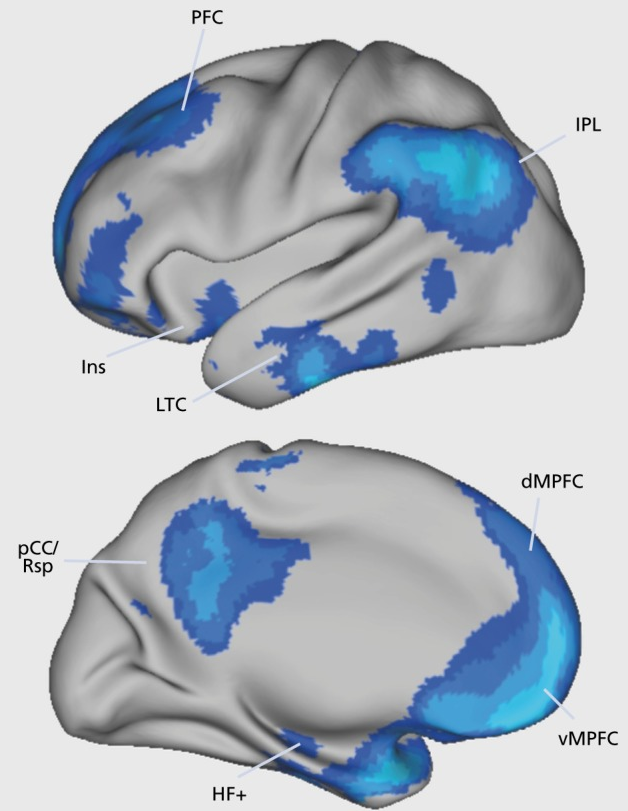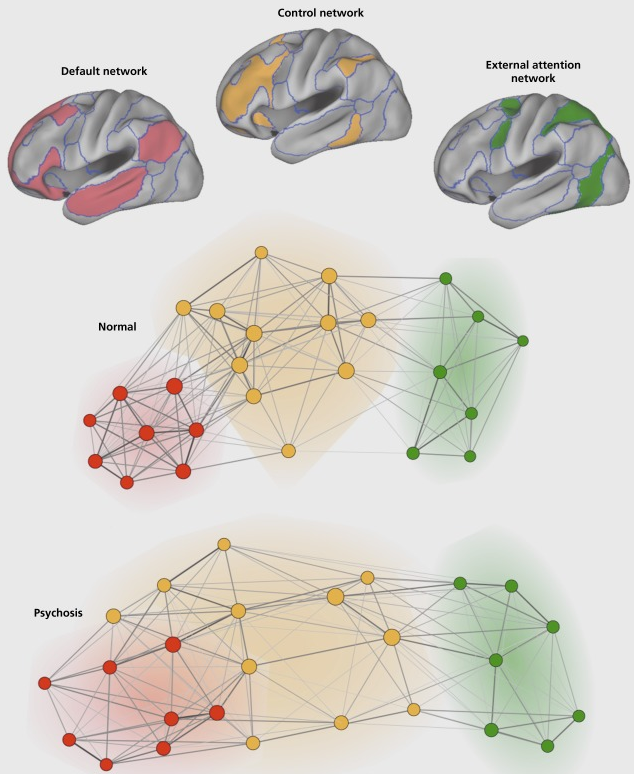|
Neuroscience of Day Dreaming
In our busy world today, we're always doing something—checking our phones, watching videos, listening to music, or studying hard. It's like our brains never get a break! But did you know that just letting your mind wander and daydream can actually be good for you? It's true! When we let our brain "chill" and not focus on anything in particular, it's not just wasting time. Scientists who study the brain have found that daydreaming or letting your thoughts go wherever they want can
help make you more creative, better at solving problems, and even plan for the future. I am going to talk about why it's important to give your brain a little vacation now and then by daydreaming. It turns out, letting your mind roam free every once in a while is actually a smart thing to do!

Running Brain Idle
When we space out or "zone out," sometimes called daydreaming or letting our minds wander, it does a bunch of different things to our brains. It can mess with our memory, how we think, and even how we handle stress. Sometimes these effects are good, and sometimes they're not so great. It really depends on when and how often we find ourselves drifting off. In short, "blank thinking" isn't all bad or all good. It can make it hard to focus and remember things right then, but
it also has perks for being creative, solving problems, and feeling better emotionally. What's important is finding the right balance and knowing when it's okay to let your mind drift off a bit. Too much daydreaming can get in the way of getting things done and feeling good, but a little bit, in the right moments, can actually be pretty helpful.
Let's dive into what happens in our brains during these moments of "blank thinking": For each of the cases, you would see that 'blank thinking / day dreaming can have positive and negative impact depending on how often/how much you spend on day dreaming.
- Memory:
- Pros : Letting your mind wander can actually help lock in memories. When we're chilling or not thinking too hard, our brains can go over new stuff we've learned, helping us remember it better later on.
- Cons : But, if you're spacing out when you're supposed to be learning something new, you might not remember it as well because your brain isn't fully taking it in at that moment.
- Thinking How?:
- Pros ->Getting Creative: Mind wandering can make us more creative. It lets our brain link different ideas together in cool ways. It's like taking a little brain vacation that can help us see problems differently when we get back to focusing.
- Cons ->Difficulties with Paying Attention: If you find yourself zoning out a lot, it might mean you're having a hard time keeping focused. This can make it tough to stick with tasks that need you to pay attention for a while.
- Dealing with Stress:
- Pros->Taking a Break: Daydreaming for a bit can give us a break from things that stress us out. It's like a mini-mental vacation that can help us feel less stressed overall.
- Cons->Worrying Too Much: But, if you're always wandering off to worry land, it might make you feel more stressed and anxious, especially if you're stuck on negative thoughts.
- Feeling All the Feels:
- Pros:Mind wandering lets us process our feelings and what's happened to us in a quiet way.
- Cons:if we're always thinking about sad or worrying stuff, it can make us feel worse.
- Making Decisions:
- Pros:give our decision-making skills a break, which might help us make better choices after.
- Cons: too much/too frequent zoning out might take us away from the task at hand
Neurocientific background of Day Dreaming
Now let's look into this topic a little bit more seriously. Are there any neuroscientific background of the effect of day dreaming mentioned before ? or it is just my impression to justify myself running my brain idle / losing focus ? :)
The neuroscientific background supporting the benefits of daydreaming and mind wandering is rooted in various studies and research findings that highlight how these mental states can positively affect the brain and cognitive functioning. Neuroscientific research continues to uncover the complex interplay between different brain networks during mind wandering and daydreaming, shedding light on how these mental states contribute to cognitive and emotional health. It's important to note, however,
that the benefits of mind wandering are most pronounced when it occurs naturally and in moderation, rather than as a constant diversion from focused activity.
Here are some key points:
- Default Mode Network (DMN) Activation:
- Daydreaming and mind wandering activate the brain's Default Mode Network (DMN), a network of interconnected areas that become active when we're not focused on the outside world. The DMN is involved in self-referential thought, future planning, and retrieving memories. Activation of the DMN is believed to support creative thinking, problem-solving, and the consolidation of memories.
- Creativity and Problem-Solving:
- Research has shown that allowing the mind to wander can foster creativity by enabling the brain to make unique connections between unrelated ideas. This is particularly evident in tasks that require divergent thinking, a thought process used to generate creative ideas by exploring many possible solutions. By engaging in daydreaming, individuals might stumble upon innovative solutions to problems or creative ideas that they might not have considered during focused thinking.
- Memory Consolidation:
- Mind wandering can aid in the consolidation of memories, a process by which short-term memories are solidified into long-term memories. During periods of rest or low cognitive demand (when mind wandering is more likely to occur), the brain can better process and integrate new information with existing knowledge, enhancing learning and memory storage.
- Emotional Processing and Regulation:
- Daydreaming allows individuals to reflect on their experiences, goals, and challenges, potentially leading to better emotional health. It can provide an opportunity for mental rehearsal and emotional processing, helping individuals to navigate social and personal problems more effectively. Furthermore, by envisioning positive outcomes and scenarios, daydreaming can contribute to emotional resilience and well-being.
- Stress Relief:
- Engaging in daydreaming can offer a temporary escape from immediate stressors, providing a mental break that can reduce stress levels. This psychological distancing can help individuals gain new perspectives on stressful situations, contributing to stress recovery and resilience.
- Enhanced Executive Functioning:
- While excessive mind wandering can be detrimental to tasks requiring sustained attention, moderate mind wandering can provide a necessary break for the brain's executive functions, which are responsible for planning, decision-making, and inhibiting counterproductive impulses. Periods of rest and disengagement can help replenish these cognitive resources, potentially improving overall cognitive performance in the long run.
Brain Regions of Mind Wandering
Mind wandering involves several brain regions, primarily within the Default Mode Network (DMN), but also extending to other networks that interact with the DMN. The DMN is a network of brain regions that is more active when we are not focused on the external environment and engaged in internally directed thoughts, such as daydreaming, recalling memories, envisioning the future, and contemplating others' perspectives.
NOTE : It doesn't mean that these area is activated only during Mind Wandering. Most of these area gets active in focused task as well and their own functionalities in such a task.

Image Source : The brain's default network: origins and implications for the study of psychosis
Followings are short descriptions of each area :
-
Medial Prefrontal Cortex (mPFC): This area is involved in self-referential thoughts—thinking about oneself. It plays a role in imagining our future selves, making moral decisions, and reflecting on our own mental states.
- The dorsomedial prefrontal cortex (dMPFC) : This area is involved in self-referential thinking and social cognition, including understanding others' beliefs and intentions. It plays a role in moral reasoning and decision-making processes that involve considering one's own and others' social and psychological states.
- The ventromedial prefrontal cortex (vMPFC) : This area is associated with processing risk and fear, emotional regulation, decision-making, and the evaluation of reward. It integrates emotional responses to guide behavior, particularly in social and personal contexts, influencing how we make decisions based on the value and emotional outcomes.
- Dorsolateral Prefrontal Cortex (DLPFC): While the DLPFC is typically associated with executive functions and is more active during goal-directed tasks, it shows a complex relationship with the DMN. It can work in opposition to DMN activity during focused tasks but may also engage during certain aspects of mind wandering, particularly when integrating external and internal information or when mind wandering becomes more goal-oriented.
-
Posterior Cingulate Cortex (PCC): The PCC is involved in autobiographical memory recall, envisioning the future, and considering the perspective of others. It acts as a hub in the DMN, integrating emotional and cognitive processes.
-
Precuneus: This part of the brain is associated with self-conscious awareness, episodic memory retrieval, and reflections on self. It's crucial for processing information related to one's own existence and experiences.
-
Inferior Parietal Lobule (IPL): The IPL is involved in attentional shifts between external and internal stimuli and plays a role in understanding the intentions of others, which is essential for social cognition.
-
Lateral Temporal Cortex (LTC): This region is associated with semantic memory, which involves the processing of knowledge about the world that is not tied to personal experiences.
-
Hippocampus: Though not traditionally considered part of the DMN, the hippocampus interacts with DMN regions during mind wandering, especially in the retrieval of past memories and the simulation of future scenarios.

Image Source : The brain's default network: origins and implications for the study of psychosis
This is short description of the image :
-
Three key networks include:
-
Default network (red)
-
Frontoparietal control network, important for executive control (orange)
-
External attention network, guiding attention towards external stimuli (green), also known as the dorsal attention network.
-
Graphical representations show brain regions (circles) and their functional correlations (line thickness) within these networks.
-
In healthy subjects (n=100), regions within each network are tightly coupled and distinct from other networks.
-
It is hypothesized that the frontoparietal control network regulates interactions between the default and external attention networks.
-
In psychotic patients (n=100, including schizophrenia, schizoaffective disorder, and bipolar disorder with psychosis):
Reference
YouTube
|
|


